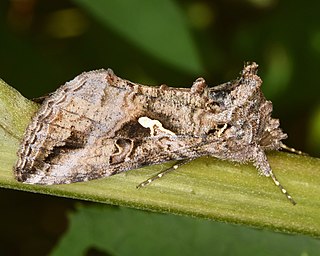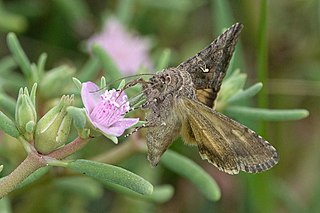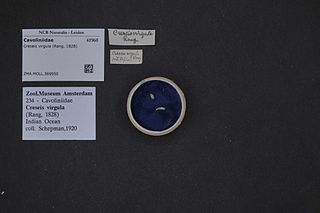
Dowsing is a type of divination employed in attempts to locate ground water, buried metals or ores, gemstones, oil, claimed radiations (radiesthesia), gravesites, malign "earth vibrations" and many other objects and materials without the use of a scientific apparatus. It is also known as divining, doodlebugging or water finding, or water witching.
Gabriel Mouton was a French abbot and scientist. He was a doctor of theology from Lyon, but was also interested in mathematics and astronomy. His 1670 book, the Observationes diametrorum solis et lunae apparentium, proposed a natural standard of length based on the circumference of the Earth, divided decimally. It was influential in the adoption of the metric system in 1799.
Tornatellides is a genus of minute, air-breathing land snails, terrestrial gastropod mollusks, or micromolluscs in the family Achatinellidae.

Earias is a genus of moths in the monotypic subfamily Eariadinae of the family Nolidae. The genus was erected by Jacob Hübner in 1825. Species are found throughout Europe, Africa, Asia and Australia, some being agricultural pests such as bollworms.
Disasuridia is a genus of moths in the subfamily Arctiinae. The genus was erected by Cheng-Lai Fang in 1991.

Pseudorthodes is a genus of moths of the family Noctuidae.

Rachiplusia is a genus of moths of the family Noctuidae.

Rachiplusia ou, commonly known as the gray looper moth, is a species of moth in the family Noctuidae. The species was first described by Achille Guenée in 1852. It is found in the southern and eastern parts of the United States, Montana, Nova Scotia, from Mexico to Venezuela to Ecuador and the Dominican Republic.

Rachiplusia nu is a species of moth in the family Noctuidae. It is found in South America, including Paraguay, Uruguay, southern Brazil, Argentina and Chile.
Rachiplusia grisea is a species of moth of the family Noctuidae. It is found in South America, including Peru.
The Festival do Rio is an international film festival in Rio de Janeiro. The festival was the result of a 1999 merger of two previous film festivals, the Rio Cine Festival and the Mostra Banco Nacional de Cinema. Founded in 1984 and 1988 respectively, the two festivals were held within a period of two months between each other. To avoid overloading the city with two film festivals within a short period of time, the two events were eventually merged.

Campyloneura virgula is a species of bugs in Miridae family. It is the only species in the genus CampyloneuraFieber, 1861.

Eusynthemis virgula is a species of dragonfly of the family Synthemistidae, known as the golden tigertail. It is a medium-sized dragonfly with black and yellow markings. It inhabits streams in south-eastern Australia.
Pseudorthodes virgula is a species of cutworm or dart moth in the family Noctuidae. It is found in North America.
Liriomyza virgula is a species of leaf miner fly in the family Agromyzidae.

Creseis virgula is a species of gastropods belonging to the family Creseidae. The larvae are zooplankton.









